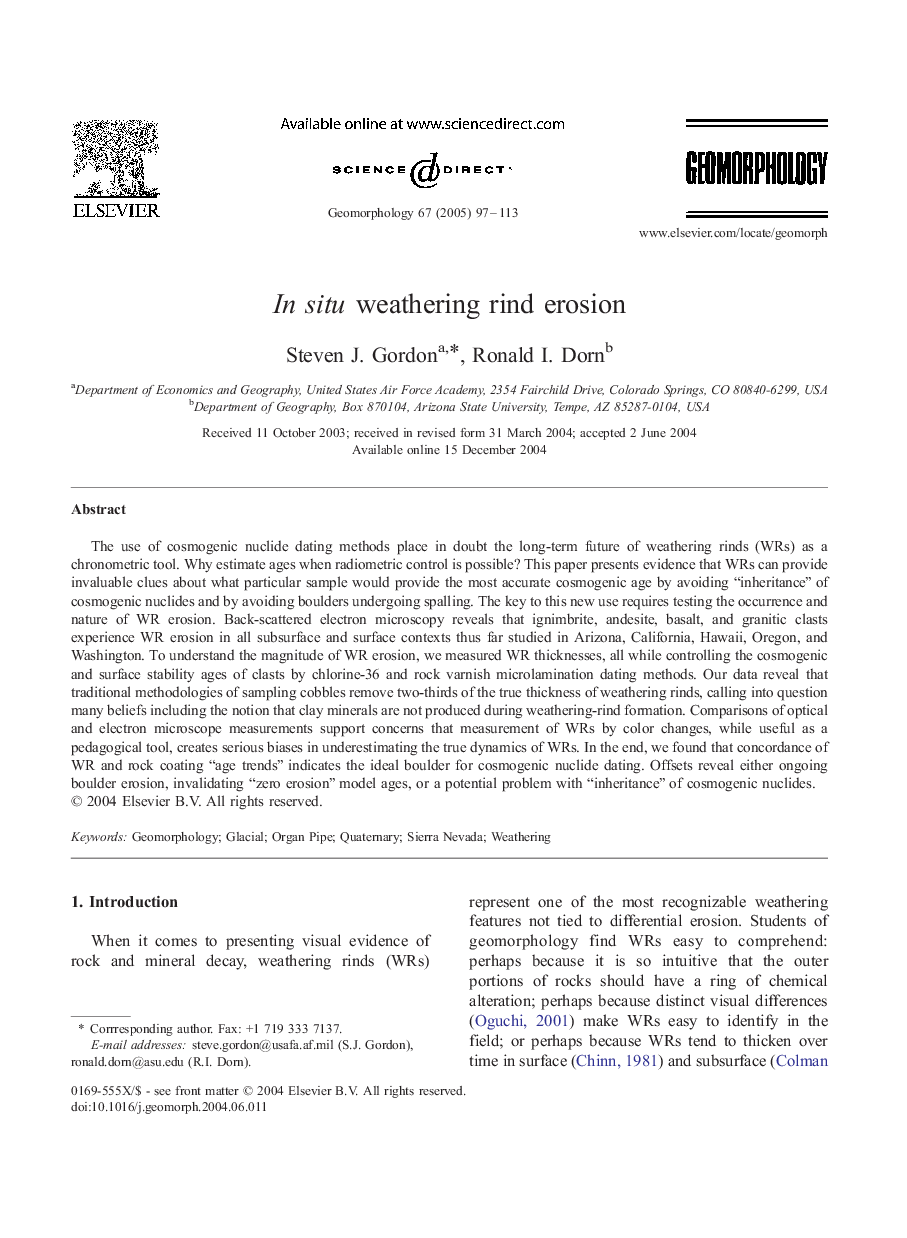| Article ID | Journal | Published Year | Pages | File Type |
|---|---|---|---|---|
| 9524937 | Geomorphology | 2005 | 17 Pages |
Abstract
The use of cosmogenic nuclide dating methods place in doubt the long-term future of weathering rinds (WRs) as a chronometric tool. Why estimate ages when radiometric control is possible? This paper presents evidence that WRs can provide invaluable clues about what particular sample would provide the most accurate cosmogenic age by avoiding “inheritance” of cosmogenic nuclides and by avoiding boulders undergoing spalling. The key to this new use requires testing the occurrence and nature of WR erosion. Back-scattered electron microscopy reveals that ignimbrite, andesite, basalt, and granitic clasts experience WR erosion in all subsurface and surface contexts thus far studied in Arizona, California, Hawaii, Oregon, and Washington. To understand the magnitude of WR erosion, we measured WR thicknesses, all while controlling the cosmogenic and surface stability ages of clasts by chlorine-36 and rock varnish microlamination dating methods. Our data reveal that traditional methodologies of sampling cobbles remove two-thirds of the true thickness of weathering rinds, calling into question many beliefs including the notion that clay minerals are not produced during weathering-rind formation. Comparisons of optical and electron microscope measurements support concerns that measurement of WRs by color changes, while useful as a pedagogical tool, creates serious biases in underestimating the true dynamics of WRs. In the end, we found that concordance of WR and rock coating “age trends” indicates the ideal boulder for cosmogenic nuclide dating. Offsets reveal either ongoing boulder erosion, invalidating “zero erosion” model ages, or a potential problem with “inheritance” of cosmogenic nuclides.
Related Topics
Physical Sciences and Engineering
Earth and Planetary Sciences
Earth-Surface Processes
Authors
Steven J. Gordon, Ronald I. Dorn,
